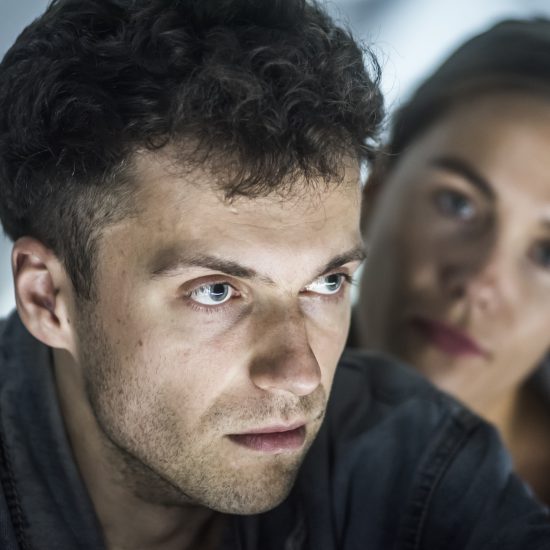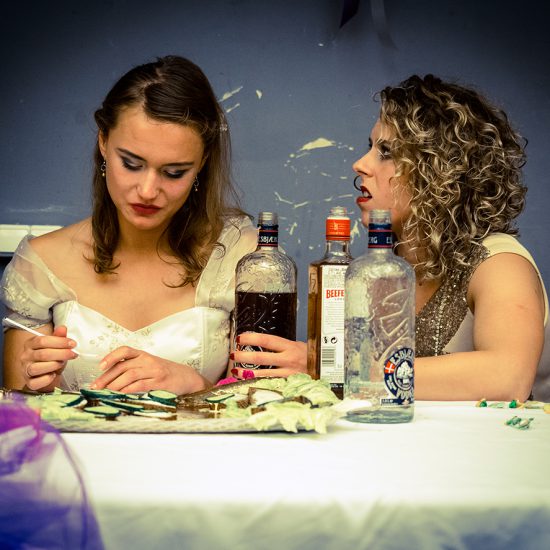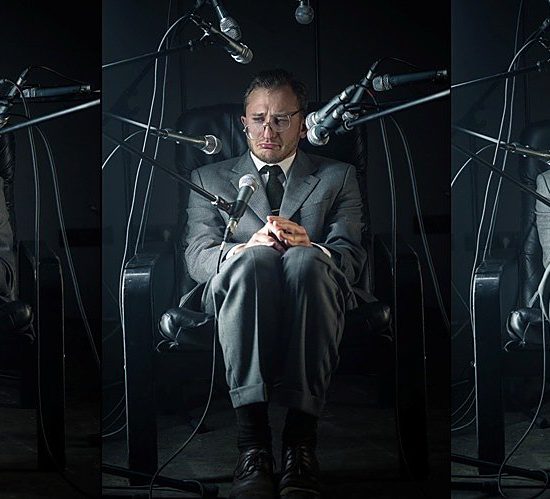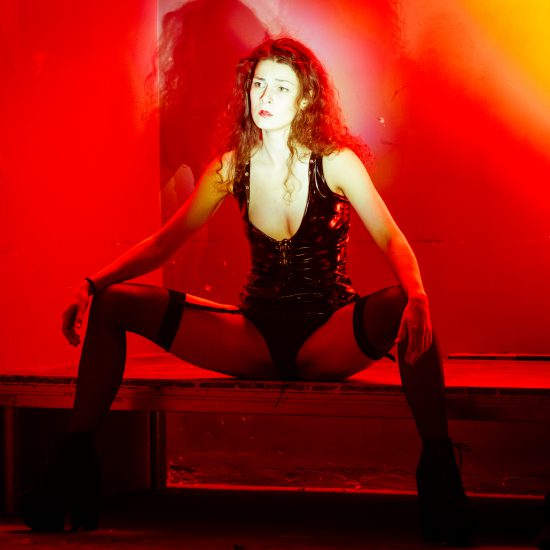The Lithuanian phantasmagoria
I would call what happens from the very first seconds of “Hamlet” and remains in the head long after the show a spell, similar to that cast by a painting, which is wonderful, yet its admirable form makes the story it tells difficult to understand. On the stage, only the red color strikes through the black and white pictures, blood-red tissues thrown into the air, as smoke hides the silhouettes of the characters, their heads covered with hoods, and creates a game of cigarettes that are lit up and twinkle in the darkness. The make-up tables – from them the theater begins – become a certain creative platform, and the essential accessory of the play. Uttering the question “Who are you?” the actors, initially led by the naive hope to hear the real answer, look at the reflections of their faces in the mirror. One feels the need of an answer. And the need of art. The three and a half hour-long show is not a coffee-klatch. Sometimes it even hurts. Because the madness of the Danish Prince, wonderfully portrayed by Darius Meškauskas, is cruel and threatening, it defies common sense. Hungry for revenge, Hamlet becomes a bloodthirsty animal. The role of the victim and defender of his father’s memory doesn’t prevent him from impersonating a martyr or a maniac. Finally, we find ourselves facing the world in which almost everybody hides behind the mask of a monster, a vision. <…> Oskaras Koršunovas’ team play wonderfully, the actors do not overshadow one another, so it is difficult to distinguish someone from the group. <…>
The visuality of Koršunovas’ performance is really impressive, particularly the play of light. Lighting designer Eugenijus Sabaliauskas masterfully and precisely divides the stage space, giving the actors the opportunity to balance on the line between full darkness and glaring light. The lighting, together with the alarming vibrations of the music, helps to create a vision of the world submerged into the eternal state of threat. However <…> Koršunovas does not stop here. He is not so much interested in the story of the young Prince of Denmark as he is in the process of its development. The director turns the stage into a kind of make-up room in which the actors calmly draw the strangest ornaments on their faces while watching their colleagues act. After the scene of Hamlet’s death, the audience has to wait a little before the actors stand up to take a bow. Again, as in the very beginning, they sit down in front of their make-up tables, wipe off their make-up, and only then turn back into human beings.



